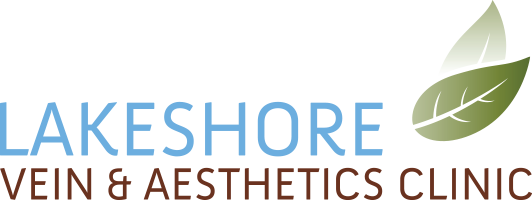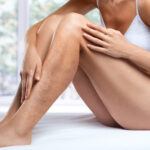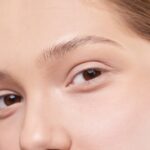They can be both unsightly and painful. Here’s how to get rid of the ropy villains ruining your legs
Story by Sydney Loney: April 2010 issue of More

I lie on my back on a narrow hospital bed and stare fixedly at the sprinkler head protruding from the ceiling as Sanjoy Kundu, medical director of The Vein Institute of Toronto, prepares to fry my varicose veins from the inside out.
In less than an hour, I made the decision to book an endovenous laser treatment (EVLT) — I’ve spent more time agonizing over buying a pair of jeans. But here I am, in a paper gown, feeling somewhat loopy from the sedative I was given. “You’re going to feel a slight prick,” Kundu says as he injects my left leg with a local anesthetic. How did I get here? I wonder to myself.
Removing varicose veins: More than just vanity
Vanity has a lot to do with it. I want to wear shorts in summer. And, on the rare occasion I don a bathing suit, I hate having to respond to the inevitable “Ohhh…what happened to your legs?” From ankle to thigh, my bruised and battered-like legs look as though they’ve been through a kick-boxing class gone bad. Appearance aside, my swollen veins are also making me increasingly uncomfortable. If I sit or stand for too long, my legs ache and feel heavy. In the summer, the veins swell and itch, and I often wake up with agonizing leg cramps.
This is not my first experience with vein procedures. My family doctor sent me for sclerotherapy (more on that later) when I was still in high school — a fairly rare treatment for your average teen. Although varicose veins are more common in women than men (affecting between 30 and 60 per cent of women over 40), they usually don’t start cropping up until you’re in your thirties. Gender and genetics are two of the biggest risk factors, so as a woman with a family history of shoddy vascular systems, I was pretty much doomed. Then I had two children. Not surprisingly, the more kids you have the greater your risk of developing varicose veins.
With the genetic odds stacked against me, I decided to find out if there was a way to fix the problem once and for all. I booked a consultation with Kundu, who examined my legs at close range while I stood on a stool in his office. “If a vein is larger than five millimetres and is bulging,” he explained, “I can tell it’s a varicose vein.” I learned that the webs of red and blue veins on my right leg were actually spider veins, but when it came to my left leg, I had not one but two of the varicose variety protruding unattractively beneath the surface of my skin.

After his initial assessment, Kundu did an ultrasound on each leg and showed me grainy images of the veins that weren’t working so well. “Spider veins are localized at the skin’s [surface], or just below,” he told me. They’re smaller and lighter in colour than varicose veins, which are dark blue or purple and tend to bulge, resembling rope. Faulty valves are to blame for varicose veins, but how? Every few centimetres along your veins are valves that open and close as your leg muscles contract, preventing blood from falling backwards as it makes its way up to your heart. “If your veins were just hollow tubes, your blood would fall into your feet whenever you stood up,” Kundu pointed out. “However, if the valves aren’t functioning and start to leak, blood flows back through them and pools, causing the veins to swell.”
How to prevent and reduce varicose vein symptoms
If you’re predisposed to varicose veins, preventing the ropy villains is tough. You can reduce your risk by being active, which improves circulation and muscle tone, says Janna Bentley, a physician specializing in varicose veins at the Lakeshore Vein and Aesthetics Clinic, an all-female-staffed clinic in Kelowna, B.C. “Maintaining a healthy weight is important too because the heavier you are, the more pressure you put on your veins.” I asked Bentley if my mother’s cautionary tale about crossing your legs was true. “I don’t do it,” she replied matter-of-factly. “I don’t think it determines whether or not you will have varicose veins, but behind the knees is a common place to get them, so it’s probably not a good idea if you’re predisposed.” However, once you notice you have either varicose or spider veins, Bentley advises seeking treatment sooner rather than later because they’ll only get worse.
This is what Kundu explained would happen if I left my spider veins alone. Yet, apparently there’s no risk to my health if I opt against treatment for my spider veins — unlike what will happen if I choose to ignore my varicose veins. While not exactly life threatening, varicose veins do carry a risk of superficial blood clots and ulcers. “And, in some patients, having multiple varicose veins in one leg increases the speed of progression and creates a greater likelihood of symptoms and possible complications if left untreated,” explained Kundu. That news alone might have prompted me to book another appointment, but the clincher was the strategically placed poster I spotted on the wall as I left his office. It showed pictures of varicose veins at various stages — none of them pretty, but the last two (featuring scaly skin and open sores) particularly unappealing. I went home and called Kundu’s office 40 minutes later to book my EVLT appointment.
When it comes to tackling varicose veins, there are a couple of treatment options. Compression stockings, if worn daily, can help alleviate the symptoms. (During my second pregnancy, I was fitted for customized compression stockings — an undignified experience involving rubber gloves, an overheated room the size of a broom closet and the help of a medical professional.) One common treatment is sclerotherapy, where veins are injected with a solution that collapses the vein walls. I used to go for these injections, 30 at a time, every couple of weeks when my veins were at their worst. Although I did see an improvement, the problem never went away entirely and I had to keep going back. While sclerotherapy works well for smaller veins, according to Kundu, it can’t solve the underlying cause of a varicose vein. He compares it to trying to plug branches of a river without stopping the waterfall that’s feeding them.
Advances in treating varicose veins
Until a few years ago, removing a varicose vein required surgery. I was told early on that I would need my veins “stripped,” an unpleasant procedure where the vein is pulled from the leg through an incision. (Varicose veins can be removed because healthy veins are available to pick up the slack.) Stripping involves a general anesthetic, a long recovery time, a fair bit of pain and a 35 to 45 per cent risk of recurrence — not the best odds. But then, in 2003, Health Canada approved EVLT. “I love EVLT — it’s one of those med-ical miracles,” says Bentley of the Lakeshore clinic. “It eliminates the pain of surgery, doesn’t require that a patient take time off and involves one puncture instead of multiple scars.”
The price tag is high ($2,500 to $3,000 per leg), but EVLT can be performed in a doctor’s office within an hour — and there is only a five per cent chance of recurrence. (Besides, going for sclerotherapy — at about $100 per treatment — can add up over the years, trust me.) With EVLT, the leg is frozen, a catheter is inserted and a laser is used to collapse and seal the vein. Because it’s a relatively new treatment, you have to do some research to find a skilled doctor. “You need to make sure he’ll do a proper assessment and be able to identify and treat the underlying problem,” Kundu advises. “Find out how many procedures the clinic does and check its credentials.” (The 18 diplomas and certificates lining Kundu’s office walls reassured me.)
When I return to his office on the day of the procedure, I have only a single moment of panic when a nurse seems surprised by my lack of apprehension — apparently, some patients experience a last-minute desire to bolt. But it’s over before I know it. I feel a weird jiggling sensation in my leg as the catheter is inserted, and that’s it. A clicking sound indicates that the laser has started its work. “You may have a metallic taste in your mouth,” Kundu warns. Actually, it’s more like I swallowed smoke, but it doesn’t last long.
Afterwards, the nurse applies bandages and helps me into a thigh-high compression stocking. Other than a slight ache, I feel okay. Over the next couple of days, I rely on ibuprofen to deal with the persistent but manageable pain in my leg. When it’s time to remove the stocking and bandages, I am pleasantly surprised. It might be my imagination, but I think my leg looks better already. I diligently do the requisite 30 minutes of walking every day, and after two weeks I’m ready to take it up a notch and go for a light jog.
The final verdict
Despite the dent in my savings, I don’t regret my decision to zap my veins once and for all. (And there’s none of the residual guilt that can accompany a splurge on overpriced denim.) Up to 50 per cent of patients require follow-up sclerotherapy appointments to completely collapse their veins and to deal with any reactive spider veins that can occur following EVLT. “Patients often wish the results would be faster, but the body has to absorb the veins cell by cell and it takes time,” says Bentley. “You will see results fairly quickly, but it takes about a year to achieve a maximum result.” After all this time, I’m prepared to be patient. Although it hasn’t yet been a year, my leg already hurts less and looks better.
My next splurge? Shorts.
Link to main More Magazine site: http://www.more.ca
Online magazine version of article: http://www.more.ca/body-and-mind/health/get-rid-of-your-varicose-veins/a/30160























